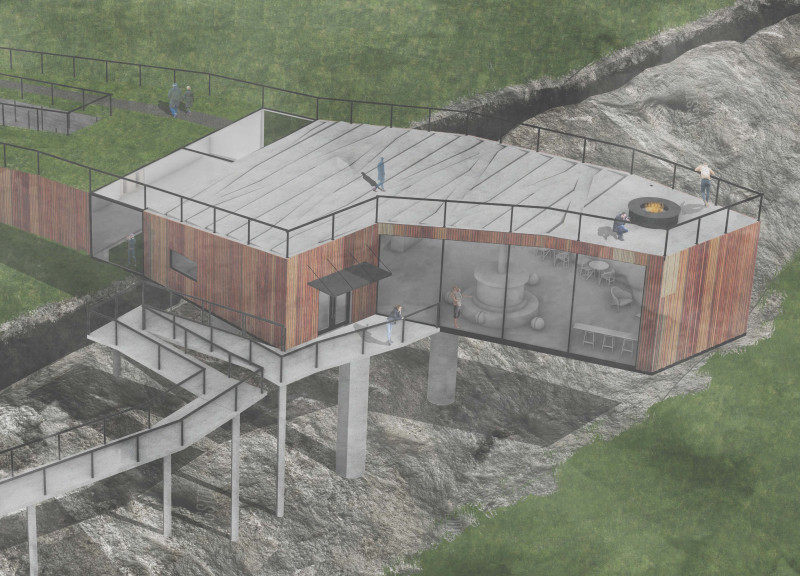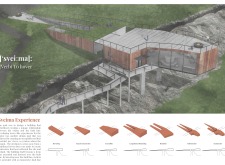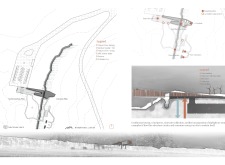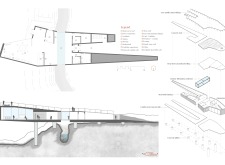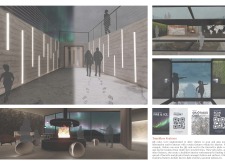5 key facts about this project
The Sveima Experience is located in Iceland, right on the Mid-Atlantic Ridge. Here, the landscape presents a unique opportunity to explore and understand geological features that define the area. The design focuses on creating a strong connection between visitors and the fault line, using the concept of "hovering." This allows the structure to rise slightly above the ground, providing visitors with special views while blending with the surrounding terrain.
Design Intent
The building steps away from traditional tower shapes, taking on a form that reflects the geological nature of its location. An occupiable roof, positioned 10.5 meters high, offers 360-degree views that draw attention to the cracks and bumps in the earth below. This height enhances visibility and encourages visitors to connect with the landscape. The design actively incorporates the area's characteristics and invites exploration from every angle.
Accessibility and Interaction
Accessibility is a cornerstone of the design, with ramps and designated stopping points thoughtfully placed throughout the site. This ensures that everyone can enjoy and understand the environment. Interactive features, like QR codes, allow visitors to learn more about the geological history with just a simple scan. These elements not only create an engaging experience but also help reduce physical contact, maintaining a hygienic space.
Sustainability and Materiality
The commitment to sustainability is clear in this design. It uses energy from geothermal sources, collects rainwater, and incorporates wind power to achieve self-sufficiency. The choice of materials, particularly low-E glass, serves the dual purpose of maximizing natural light and conserving energy. This careful selection speaks to a broader focus on environmental responsibility, integrating performance with useful accessibility.
Common areas are designed with community in mind, including an entry fire pit and observation platforms that allow visitors to take in significant geological features. This layout enhances social interaction while strengthening the connection between people and the landscape. Ultimately, the design resonates with not just its immediate surroundings but also with the larger geological narratives that define the Icelandic environment.


